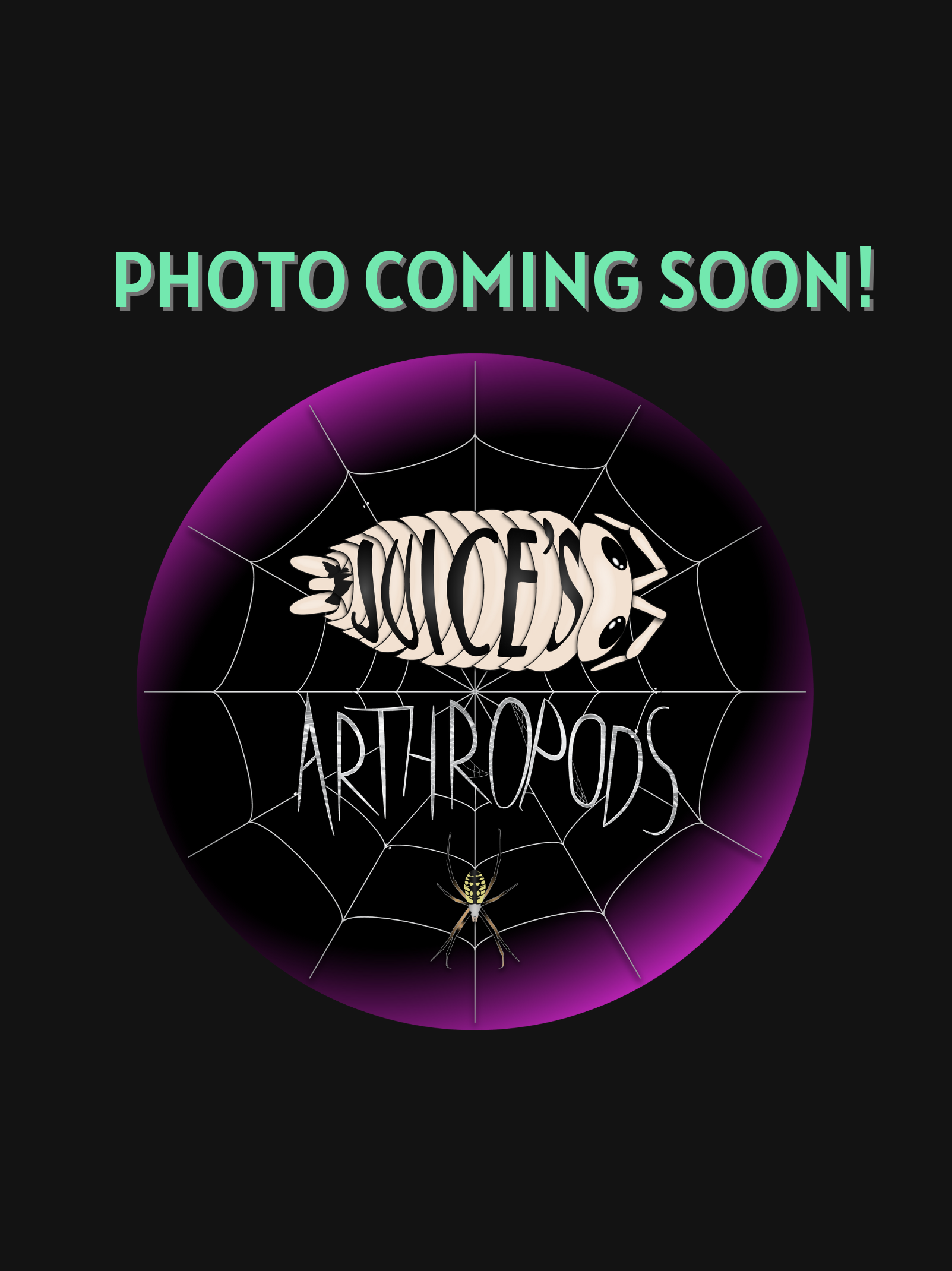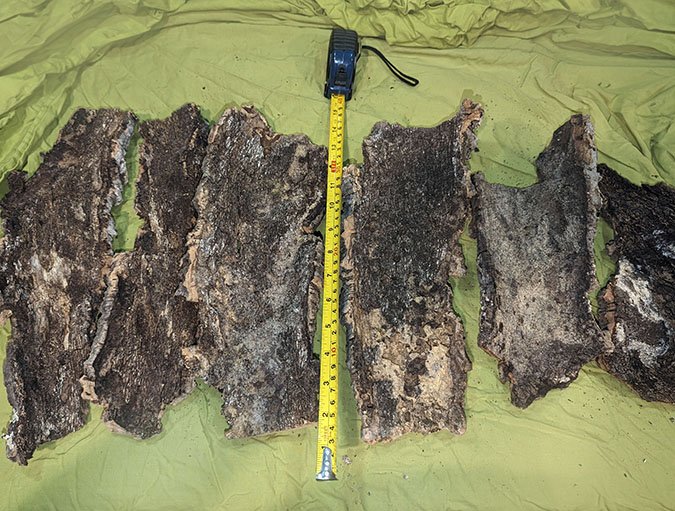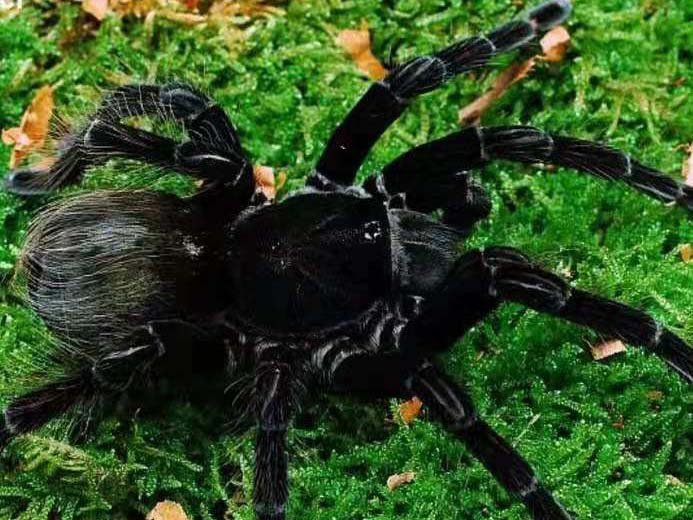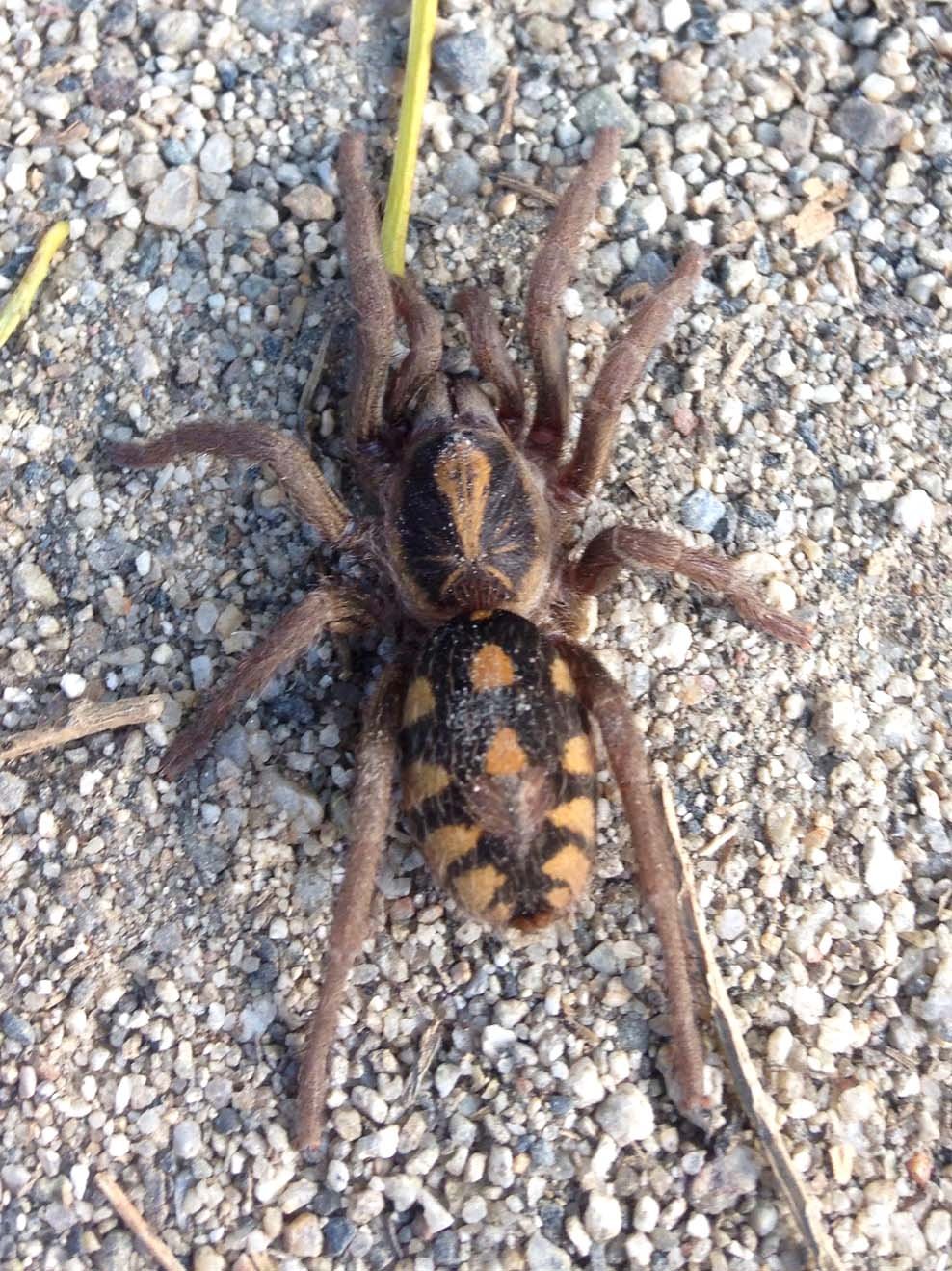Pamphobeteus sp 'Platyomma'
Pamphobeteus sp. 'Platyomma', commonly known as the Pink Bloom Tarantula, is a large, terrestrial New World tarantula native to the Amazonian regions of South America, likely ranging across parts of Brazil, Ecuador, and Peru. Belonging to the Pamphobeteus genus—famed for its impressive size, dramatic coloration, and bold feeding behavior—this species is a striking example of why these spiders are often considered the “heavyweights” of the tarantula world.
The nickname Pink Bloom refers to the brilliant pink to magenta highlights that often develop on the carapace and legs, especially following a fresh molt. These rich tones contrast beautifully with the spider’s dark, velvety base color, which may range from brown to near-black, sometimes with purplish or bronze undertones. Juveniles exhibit the classic Pamphobeteus “Christmas tree” pattern on the abdomen, making them striking even at a young age.
Despite its beauty, Pamphobeteus sp. 'Platyomma' is known for being a highly active, fast-growing, and occasionally defensive species. While it typically avoids confrontation, it will readily kick urticating hairs and may show threat postures if provoked. As a result, it’s best suited to intermediate to advanced keepers, especially those comfortable working with large, powerful terrestrial species.
Pamphobeteus sp. 'Platyomma', commonly known as the Pink Bloom Tarantula, is a large, terrestrial New World tarantula native to the Amazonian regions of South America, likely ranging across parts of Brazil, Ecuador, and Peru. Belonging to the Pamphobeteus genus—famed for its impressive size, dramatic coloration, and bold feeding behavior—this species is a striking example of why these spiders are often considered the “heavyweights” of the tarantula world.
The nickname Pink Bloom refers to the brilliant pink to magenta highlights that often develop on the carapace and legs, especially following a fresh molt. These rich tones contrast beautifully with the spider’s dark, velvety base color, which may range from brown to near-black, sometimes with purplish or bronze undertones. Juveniles exhibit the classic Pamphobeteus “Christmas tree” pattern on the abdomen, making them striking even at a young age.
Despite its beauty, Pamphobeteus sp. 'Platyomma' is known for being a highly active, fast-growing, and occasionally defensive species. While it typically avoids confrontation, it will readily kick urticating hairs and may show threat postures if provoked. As a result, it’s best suited to intermediate to advanced keepers, especially those comfortable working with large, powerful terrestrial species.

Pamphobeteus sp. 'Platyomma', commonly known as the Pink Bloom Tarantula, is a large, terrestrial New World tarantula native to the Amazonian regions of South America, likely ranging across parts of Brazil, Ecuador, and Peru. Belonging to the Pamphobeteus genus—famed for its impressive size, dramatic coloration, and bold feeding behavior—this species is a striking example of why these spiders are often considered the “heavyweights” of the tarantula world.
The nickname Pink Bloom refers to the brilliant pink to magenta highlights that often develop on the carapace and legs, especially following a fresh molt. These rich tones contrast beautifully with the spider’s dark, velvety base color, which may range from brown to near-black, sometimes with purplish or bronze undertones. Juveniles exhibit the classic Pamphobeteus “Christmas tree” pattern on the abdomen, making them striking even at a young age.
Despite its beauty, Pamphobeteus sp. 'Platyomma' is known for being a highly active, fast-growing, and occasionally defensive species. While it typically avoids confrontation, it will readily kick urticating hairs and may show threat postures if provoked. As a result, it’s best suited to intermediate to advanced keepers, especially those comfortable working with large, powerful terrestrial species.
What's the ideal diet for a Pink Bloom Tarantula?
All Tarantulas can eat a variety of feeders. Stick to crickets, dubia roaches, silkworms, horned worms occasionally, and a superworm or mealworm as the occasional treat!
How should I keep a Pink Bloom Tarantula?
For this particular creature, you can start with the Terrestrial Terrain small enclosure if under a ¼" - 1.2" Spiderling (sling). When they get to be about 1" in size, you will want to either go to the Terrestrial Terrain Medium or Terrestrial Terrain Large enclosure. Feed them as slings once a week, twice if their opisthosoma (abdomen) looks small, but if the opisthosoma is wider than their prosoma (pneumothorax) then wait a couple of days to feed. For juveniles or adults, stick to feeding once a week, nothing larger than their opisthosoma. Make sure to keep a water dish at all times full; wider and deeper is preferred.
How long could a Pink Bloom Tarantula live?
Females are believed to live upwards of 20+ years, and males not exceeding around 5 years of age. All estimates are based on multiple sources.























